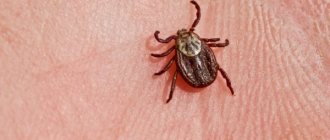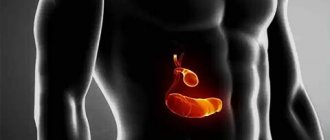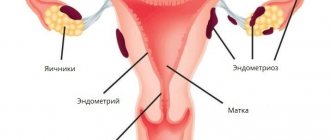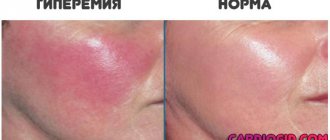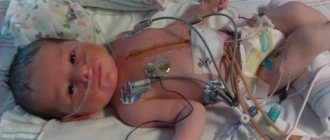IHD occupies a strong leading position among the most common heart pathologies, often leads to partial or complete loss of ability to work, and has become a social problem for many developed countries of the world. A busy rhythm of life, constant stressful situations, adynamia, poor nutrition with consumption of large amounts of fat - all these reasons lead to a steady increase in the number of people suffering from this serious disease.
The term “coronary heart disease” combines a whole group of acute and chronic conditions that are caused by insufficient oxygen supply to the myocardium due to narrowing or blockage of the coronary vessels. Such oxygen starvation of muscle fibers leads to disturbances in the functioning of the heart, changes in hemodynamics and persistent structural changes in the heart muscle.
Most often, this disease is provoked by atherosclerosis of the coronary arteries, in which the inner wall of the vessels is covered with fatty deposits (atherosclerotic plaques). Subsequently, these deposits harden, and the vascular lumen narrows or becomes impassable, disrupting the normal delivery of blood to the myocardial fibers. From this article you will learn about the types of coronary heart disease, the principles of diagnosis and treatment of this pathology, the symptoms and what cardiologist patients need to know.
What is ischemic disease and what are the causes of its occurrence?
It is provoked by impaired coronary circulation. As a result, saturated arterial blood does not flow to the heart. We can say that in most cases the problem is associated with a deterioration in the patency of the arteries. Another provoking factor may be excessive physical activity.
The narrowing is caused by fatty deposits that form plaque. Deterioration of blood flow leads to the fact that organs are not supplied with nutrients and oxygen in sufficient quantities. The vessels may harden and narrow, or plaque may be deposited within them. When the flow decreases, chest pain occurs. Unpleasant sensations are explained by excess toxins.
What does it mean
The term is translated from Greek as “holding back the blood.” By typing a query into the search engine “coronary artery disease - cardiac ischemia” to find out what kind of disease it is and what its symptoms are, you can get the following answer: this is myocardial damage, resulting from insufficient blood supply to the heart muscle. It is clear that it has many consequences. If the heart is poorly supplied, the brain, stomach and liver also do not receive nutrition.
Symptoms
The main manifestation of myocardial ischemia is chest pain. The severity of pain can vary - from mild discomfort, a feeling of pressure, burning in the chest to severe pain during myocardial infarction. Pain or discomfort most often occurs behind the sternum, in the middle of the chest, or inside it. The pain often radiates to the left arm, under the shoulder blade or down to the solar plexus area. The lower jaw and shoulder may hurt. In a typical case, an angina attack is caused by physical (less often emotional) stress, cold, heavy food - everything that causes an increase in the work of the heart. Pain is a manifestation of the fact that the heart muscle lacks oxygen: the blood flow provided by the narrowed coronary artery becomes insufficient under load.
In typical cases, the attack is eliminated (stopped) with rest on its own or after taking nitroglycerin (or other fast-acting nitrates - in the form of sublingual tablets or spray). It must be borne in mind that nitroglycerin can cause headaches and a decrease in blood pressure - these are direct manifestations of its action. You should not take more than two nitroglycerin tablets on your own: this is fraught with complications.
There may be no complaints (this is the so-called silent myocardial ischemia), sometimes the first manifestation of IHD is myocardial infarction or sudden death. In this regard, everyone who has risk factors for atherosclerosis and who is going to engage in physical exercise needs to undergo a stress test (see below) to make sure that myocardial ischemia does not occur during exercise.
Interruptions in the work of the heart (extrasystoles) in themselves are not a sign of coronary artery disease. The cause of extrasystoles most often remains unclear, and extrasystole itself does not require treatment. Nevertheless, in patients with coronary artery disease, extrasystole often occurs during physical activity: if you conduct a stress test and make sure that the extrasystole disappears during exercise, this indicates its benign nature, that it is not life-threatening.
Complaints with ischemic cardiomyopathy are characteristic of heart failure of any other origin. First of all, it is shortness of breath, that is, a feeling of lack of air during exertion, and in severe cases, at rest.
Causes and risk factors
People over 55-60 years of age, especially men, are most susceptible to this disease. It all starts with the fact that atherosclerosis affects the coronary vessels. Plaques formed by fatty acids appear on surfaces. Blood flow worsens, and when the lumen of the artery becomes blocked by 9/10, a threat is created.
However, at any age there are phenomena that contribute to the development of pathology:
- excess fat-saturated foods in the diet;
- passive lifestyle;
- alcohol abuse;
- Smoking increases the likelihood by 25 percent.
It can also be caused by taking medications with estrogen. This is due to the fact that medications that affect hormonal levels cause high blood pressure. Patients with diabetes mellitus are at risk. In this case, the walls of the arteries thicken, and the viscosity of the blood increases. With increased stress on the heart muscle, the chance of blockage of the passages increases.
Heredity also plays a role. If you have relatives or ancestors who suffered from vascular diseases, this is a reason to get tested.
Causes
In 90% of cases, IHD is provoked by a narrowing of the lumen of the coronary arteries, caused by atherosclerotic changes in the walls of blood vessels. In addition, disturbances in the correspondence of coronary blood flow and the metabolic needs of the heart muscle can be a consequence of:
- spasm of slightly changed or unchanged coronary vessels;
- tendency to thrombus formation due to disorders of the blood coagulation system;
- microcirculation disorders in the coronary vessels.
Risk factors for the development of such etiological causes of IHD may be:
- age over 40-50 years;
- smoking;
- heredity;
- arterial hypertension;
- diabetes;
- obesity;
- increased levels of total plasma cholesterol (more than 240 mg/dl) and LDL cholesterol (more than 160 mg/dl);
- physical inactivity;
- frequent stress;
- poor nutrition;
- chronic intoxication (alcoholism, work in toxic enterprises).
Types and forms of coronary heart disease
There are two – chronic with severe symptoms and acute. Typical manifestations are angina attacks with chest pain. Painful sensations can be associated with physical stress or occur without its impact.
In the absence of progression, the failure is called a stable pathology, which has little effect on the quality and duration of life. When discomfort intensifies and increases, an unstable type occurs. In such a situation, urgent measures are required.
This disease is classified according to the recommendations of the World Health Organization as follows.
| Forms of ischemia | |
| Acute | Chronic |
|
|
Symptoms of IHD
You should always monitor your health. Signs during the developmental stage include shortness of breath, which should not occur during a normal walk or when doing housework. Its appearance is not difficult to explain. Due to lack of nutrients, the left half of the body's main muscle weakens. It is no longer able to pump blood into the aorta, and as a result it overflows and begins to put pressure on the right one.
As a result, the half under pressure affects the capillaries of the lungs, and the person cannot breathe fully. After all, it is these tiny vessels that distribute oxygen.
When a relative has coronary artery disease (CHD), this is dangerous, because the worst outcome may be a heart attack. At this moment, acute pain appears and breathing becomes difficult. The patient breaks out in a cold sweat and is in a nervous state. If you have any suspicions, it is important to call emergency services immediately.
How often should a cardiogram be done for a patient with coronary artery disease?
The diagnosis of IHD is established only on the basis of a detailed survey, examination, description of an ECG at rest and taken during an attack, with physical activity and, if necessary, echocardiography and coronary angiography.
Often in the early stages of coronary artery disease, ischemic signs are not detected on an ECG taken during the interictal period. Pathology is found when performing functional exercise tests or Holter monitoring. These methods help to identify hidden areas of damage and register a silent form of ischemia, which is more dangerous.
According to the rules of medical examination, patients with stable coronary artery disease undergo an ECG annually.
In patients with a newly established diagnosis, for whom adequate therapy is being selected, a cardiogram is performed more often.
An unscheduled ECG is indicated when:
- pain attacks that are atypical for a particular patient;
- prolonged episodes of angina pectoris;
- the occurrence of rhythm disturbances.
Additionally, an ECG for myocardial ischemia is indicated before performing bicycle ergometry, coronary angiography, stenting and coronary artery bypass grafting.
Complications
Failures of this kind are characterized by a wave-like flow. Periods of normal well-being alternate with exacerbations. A third of patients may not feel at all that anything is wrong, or the attack manifests itself as general weakness. The most common occurrence is chest pain during exercise.
With cardiac ischemia, symptoms are often aggravated by the patients themselves due to abandonment of an active lifestyle. As a result of lack of mobility, excess weight appears, which further contributes to coronary artery disease. Side effects also include swelling and shortness of breath. All this, coupled with excess weight, creates additional stress on the skeleton, and joint diseases may appear.
Post-infarction cardiosclerosis
This is a pathological condition characterized by the proliferation of scar connective tissue. The valves are deformed, muscle fibers, myocardium and its composition change. For diagnosis, symptoms and indications of changes that directly depend on the replacement of normal with connective are used. Pathology is diagnosed by ECG, MRI, computed tomography, scintigraphy, echocardiogram.
Leave a request for selection of a boarding house
for an elderly person with coronary heart disease
Chronic heart failure
To understand what cardiac ischemia is, you need to know what complications can arise if left untreated. Develops over a long period of time. Its signs are fatigue, shortness of breath, swelling, and decreased physical activity. These manifestations are caused by impaired blood supply to tissues and organs, often accompanied by moisture retention in the body. Some of the main postulates of CNS prevention are:
- limiting salt intake;
- fight against excess weight;
- reducing drinking intake to one and a half liters per day.
Acute heart failure
This undesirable shift is caused by disruption of the myocardium. In this case, there is an increase in the volume of intercellular fluid with a deterioration in blood transmission. May be associated with injuries, toxins, or cardiac problems. She is capable of the following conditions: cardioshock, pulmonary edema, kidney problems, asthma. Lack of adequate treatment often ends in the death of the patient.
Cardiogenic shock
This is the extreme degree of cessation of normal functioning of the left ventricle. As a result, myocardial contractility decreases. An improper supply of all organs, tissues and systems begins. Rehabilitation will be difficult, since it is a complication of a massive heart attack. Sometimes caused by myocarditis or toxic substance poisoning. Treatment for this condition should include emergency medical procedures. The main goal of therapy is to increase blood pressure.
Arrhythmia is a sign of cardiac ischemia
The pathological form is manifested by interruptions in the contraction of the heart muscle. Patients often experience pain in the chest, which is combined with a fast or slow pulse. In such a situation, you need to call an ambulance. With such ailments, rhythm disturbances are observed. It is caused by a decrease in the amount of blood entering the heart through clogged arteries. Depending on which department there are deviations, it is divided into types:
- sinus;
- atrial;
- ventricular
When there are more than one hundred beats per minute, this condition is called tachycardia. Paroxysmal tachycardia is a regular increase in heart rate up to 150-200 beats per minute. It is not associated with physical activity and may cause weakness or be asymptomatic.
If symptoms of coronary heart disease are diagnosed, treatment depends on their type. Extrasystole is a rhythm disturbance when the heart muscle contracts prematurely. A person gets the impression that his heart stopped for a moment. After a short break, normal heartbeat is restored.
Electrocardiographic signs of ischemic heart disease
Changes in the ECG in coronary heart disease are caused by oxygen deficiency resulting from pathology of the coronary vessels and energy disturbances in cardiomyocytes.
Techniques for detecting ischemia:
- Simple 12-lead ECG.
- With additional leads - for diagnosing certain localizations of ischemia that are not recorded with a regular ECG.
- Holter monitoring (cardiogram recording for 24-48 hours).
- ECG with physical activity (stress test) - to determine hidden pathology.
- With medicinal samples.
50% of patients with coronary artery disease at rest have no signs of ischemia on the ECG. Therefore, the “gold standard” in the outpatient diagnosis of such a disease is an exercise test. This procedure solves several problems simultaneously:
- identification of hidden coronary insufficiency;
- registration of fleeting rhythm disturbances;
- designation of the threshold of tolerance to physical activity.
Photo 1. Bicycle ergometry.
The most commonly used are bicycle ergometry or treadmill test (treadmill). In a person with healthy vessels, such a load causes dilatation of the coronary arteries and an increase in myocardial contractility, necessary to ensure adequate blood flow. In the case of coronary artery disease, the coronary arteries are already in an expanded state before the load and do not compensate for the need. As a result, angina pectoris occurs and ischemia is recorded on the ECG.
Bicycle ergometry is done on a special exercise bike. ECG sensors and a tonometer cuff are fixed on the patient to monitor hemodynamic parameters. The procedure lasts 15-20 minutes. During this time, the load gradually increases from 25 to 50 W. Patients with severe cardiac diseases are allowed to take short breaks.
The test is stopped if:
- changes in the ST segment on the ECG;
- attack of chest pain;
- drop in blood pressure;
- increase in blood pressure more than 200 mm Hg. Art.;
- achieving the threshold heart rate for a given age;
- severe shortness of breath;
- serious rhythm disturbances;
- dizziness, severe weakness, nausea;
- patient refusal.
Photo 2. Treadmill test.
The treadmill test differs from bicycle ergometry only in that the patient performs physical activity on a treadmill with a varying inclination angle.
Load tests are contraindicated if:
- acute coronary syndrome;
- unstable course of angina pectoris;
- severe circulatory failure;
- stroke;
- thrombophlebitis;
- hypertensive crisis;
- severe arrhythmias;
- decompensated heart defects;
- severe pain in diseases of the musculoskeletal system.
Ischemia slows down the repolarization processes in the cardiomyocyte or changes the direction of the electrical wave. On an ECG with coronary artery disease, these disturbances correspond to widening, depression and changes in the configuration of the ST segment. In acute coronary syndrome, the main pathological changes are observed in the QRS complex and the ST segment.
The degree of changes in the ECG is directly related to the extent of the process and the duration of ischemia. With stable angina, signs of coronary insufficiency may not be detected on a cardiogram taken in the interictal period. And in the case of MI, disorders are recorded both in the acute phase and after several years.
One of the early signs of insufficiency of coronary blood flow is the appearance of a distinct sharp border between the transition of the ST segment to the T wave. Further growth of the atherosclerotic plaque aggravates ST depression below the isoline.
Types of ST interval depression in coronary artery disease:
| Offset type | ST interval | T wave |
| Horizontal | Parallel and below the isoline | Positive (+), negative (-) or biphasic |
| Oblique descending | The degree of ST depression increases with distance from the ORS complex | +/-, smoothed |
| Arched, rounded upward | The degree of displacement varies throughout, in the shape of an arc | Any kind |
| Oblique ascending | The greatest ST depression is located immediately after the QRS | Positive, smoothed |
| Trough-shaped | Arc shape with a convexity, apex down | Any kind |
| Elevation of the ST segment above the isoline | Rounded, arc with apex downwards | Positive, smoothed |
Changes in the ST segment in coronary artery disease are most clearly visible in the leads:
- V4-V6;
- II, III;
- aVF, I, aVL.
Unlike acute coronary syndrome with ischemic heart disease, ST changes are stable over months and even years.
ST segment depression is present when:
- ventricular hypertrophy;
- myocarditis;
- pericarditis;
- therapy with Digitalis;
- hypokalemia;
- myocardial dystrophy;
- bundle branch block, WPW syndrome;
- acute pancreatitis, cholecystitis, cholelithiasis, diaphragmatic hernia (reflex reaction);
- pulmonary failure;
- pulmonary embolism;
- nicotine poisoning;
- Prinzmetal's angina;
- vegetative-vascular dystonia.
The greatest stability in ischemic heart disease is associated with changes in the T wave (the so-called “coronary”). This is a negative, symmetrical T wave with an amplitude of more than 5 mm, which signals serious ischemic damage to the myocardium. A rounded and irregularly shaped tooth indicates less pronounced changes in the heart muscle.
The farther the electrode is installed from the place that is supplied by the damaged vessel, the less pronounced the signs of ischemia on the ECG.
Changes in T waves are recorded in:
- left chest leads;
- I;
- aVL;
- III;
- aVF.
But similar changes in T waves are also observed with:
- pulmonary embolism;
- myxoma;
- myocarditis;
- constrictive pericarditis;
- ventricular hypertrophy;
- cardiac conduction blockades;
- electrolyte imbalance;
- excessive smoking;
- hypokalemia;
- dishormonal processes;
- stress;
- use of certain medications.
With a long course of coronary artery disease, the ECG shows a widening of the P wave. This is an unfavorable prognostic sign regarding the risk of acute coronary syndrome and atrial fibrillation.
Slowing of electrical conduction during ventricular systole (QT) is also observed. The heart, under conditions of oxygen starvation, which is caused by atherosclerotic cardiosclerosis, needs more and more time to contract.
Due to a decrease in coronary blood flow, arrhythmias and blockades occur:
- extrasystoles;
- sinus tachycardia, bradycardia;
- atrial flutter;
- paroxysmal tachycardia;
- atrioventricular block;
- Hiss bundle branch block.
The extreme degree of ischemia of the heart muscle is myocardial infarction. If necrosis involves all layers of the muscle, there is a high probability of fatal arrhythmia, cardiac arrest, rupture of the papillary muscles, thromboembolism, ventricular aneurysm, acute circulatory failure and cardiogenic pulmonary edema.
Using a standard ECG, reliable data regarding the location and area of the lesion are obtained already at the prehospital stage.
It is very difficult to diagnose posterior and basal MI when the left ventricle is affected at the site of contact with the diaphragm. In such cases, additional leads V7-V9 and dorsal along the Palate are required.
Manifestations of myocardial ischemia
Often the symptoms are similar to those of other diseases in the field of cardiology. Therefore, to make a diagnosis, you need to undergo a series of tests at a medical institution. When self-diagnosing, pay attention to the following symptoms:
- shortness of breath during physical activity or for no apparent reason;
- heart rhythm disturbance;
- severe fatigue after light exercise;
- the phenomenon of heartburn and colic in the abdominal cavity.
Older people often confuse them with other ailments. However, if you experience frequent ailments, fatigue, pain in the heart area, contact a cardiologist and get examined. In this case, diagnostics are first prescribed - electrocardiogram, echocardiography, MRI and other studies.
| Signs | The myocardium, and then other organs, do not receive nutrition | Malnutrition, atrophy, hypoplasia, dystrophy develop | Change in the diameter of capillaries and arterioles | Accumulation of toxins | Decreased specific function | ||
| Consequences of ischemia | The heart muscle degrades | Temperature drop | Paleness | Slow blood circulation | Reducing lymph formation and lymph drainage | The turgor volume of an organ or tissue is insufficient | |
| Reduced pulsation of arterial vessels | Narrowing and reducing their number | Narrowing of the plasma flow region | |||||
| The axial “cylinder” is expanded | |||||||
| The number of functioning capillaries becomes smaller | |||||||
| Changes in the vessels responsible for microcirculation | |||||||
Angina and its types
It is called sudden chest pain for no apparent reason. Symptoms often include pain not only in the chest, but also in the left shoulder or arm. Pain in the back and neck is possible. This is due to the fact that these parts of the body are separated by common nerve passages.
There are different forms:
- Tension – pain occurs during physical exercise, stress, and adverse weather conditions.
- Rest - in the last stages, when even without load a painful sensation remains.
- Variant – requires immediate hospitalization.
- Progressive – pain increases cyclically.
- Stable – the disease does not progress, symptoms recur.
If we consider how coronary heart disease manifests itself, it can remind itself during sports or in a stressful situation. The key organ is not supplied with blood in full, which causes an attack of angina.
Diagnosis and treatment
The modern tactics of treating such patients is to immediately transport them to a hospital, where it is possible to perform emergency stenting of the coronary artery in which the catastrophe occurred. We must act immediately: about half of those who die from myocardial infarction die within the first hour after the first signs appear.
Unstable angina is distinguished from myocardial infarction by the reversibility of myocardial damage: during a heart attack, part of the myocardium supplied with blood from the affected artery dies and is replaced by scar tissue; with unstable angina, this does not happen.
With myocardial infarction, there are characteristic changes in the electrocardiogram, an increase and then a decrease in the level of several proteins - markers of myocardial necrosis, and impaired contractility of several segments of the left ventricle according to echocardiography.
Anterior myocardial infarction has its own complications, while lower myocardial infarction has its own. Thus, with anterior myocardial infarction, cardiogenic shock, pericarditis (the so-called epistenocardiac pericarditis), left ventricular rupture, false and true aneurysms of the left ventricle, dynamic obstruction of the left ventricle, and blockade of the left bundle branch are much more common. Lower infarction is characterized by transient disturbances of atrioventricular conduction, mitral insufficiency, rupture of the interventricular septum, and damage to the right ventricle.
After a period of hospitalization, rehabilitation is carried out: a regimen of physical activity is developed, medications are prescribed for constant use. Anyone who has had a myocardial infarction should, unless contraindicated, take at least four medications continuously: a beta blocker (eg, metoprolol, bisoprolol, nadolol), an antiplatelet agent (most often aspirin), a statin (eg, atorvastatin, rosuvastatin) and an ACE inhibitor ( enalapril, lisinopril and others). Before discharge from the hospital or immediately after it, it is necessary to conduct a stress test (preferably stress echocardiography) and decide on the advisability of coronary angiography.
Fighting the disease
Actions depend on the specific type of violation. Therapy for each form is carried out according to a separate scheme. In a serious stage, it is unacceptable to use only traditional methods. In addition to medications or surgical interventions, a positive attitude of the patient is also important.
If a person is in a state of chronic stress, relatives need to know everything about coronary heart disease, what it is, what are the symptoms and treatment of coronary heart disease in older people. Protect your loved one from unnecessary worries and create a favorable atmosphere. You may need not only sedatives, but also a consultation with a psychotherapist, especially if you are old. In any case, you can’t delay it.
Quitting smoking is important because sudden coronary death is often associated with this habit. Physical inactivity, that is, lack of movement, also does not contribute to recovery. Doctors recommend doing a set of cardio exercises every day. Walking in the fresh air will be useful.
How and with what to treat coronary heart disease: basic approaches and methods
The failure is caused by a lack of oxygen supplied to the myocardium. Non-invasive, that is, without surgical intervention, includes therapy with pharmaceutical or folk remedies. If everything is mild, herbal decoctions, tinctures, and various medicinal products will provide a supporting effect. Naturally, before using traditional medicine, you need to visit a doctor and consult. In serious cases, nitroglycerin is used to relieve attacks, acetylsalicylic acid, statins, etc. When drug therapy does not have an effect, surgery is resorted to. A stent is inserted to restore the lumen of the vessel, or coronary bypass surgery is performed.
Drug treatment
Often people do not know what cardiac ischemia means and how it manifests itself in an adult, and do not take into account that it is unlikely to be able to cure the disease completely. If you consult a doctor in time, you can improve the patient’s quality of life. There are men and women with cardiac disorders who lead normal lives. Three types of drugs are actively used in the treatment of this pathology:
- antiplatelet agents - usually called blood thinners;
- beta blockers - reduce heart rate;
- cholesterol-lowering medications.
To relieve attacks, nitrates are used: nitroglycerin, isosorbide, 5-mononitrate and dinitrate. These medications have side effects:
- headache;
- decreased blood pressure;
- tachycardia.
Antiplatelet agents include aspirin, indobufen, nicotinamide, lamifiban, ticlopidine and many others. Herbal remedies include green tea, horse chestnut, ginger, blueberries, licorice, red clover, St. John's wort and others.
Surgical treatment of coronary heart disease and its symptoms
The main goal of the surgeon is to restore the lumen of the narrowed artery. Such treatments include:
- Coronary artery bypass grafting - a vascular anastomosis is created between the aorta and the affected vessel. The graft is the patient's own tissue.
- Transmyocardial laser revascularization is rarely used, it can reduce pain and improve the general condition of the patient. Using a laser, about 30 through holes are carefully made. Through these passages, blood from the left ventricle supplies the heart.
- A minimally invasive technique - a stent with a mesh structure is installed, and by creating a frame in the right place, blood flow is restored. Under the control of an X-ray machine, the narrowing of the artery is initially found.
- Transplantation is used only for one percent of those admitted to the hospital, since it is difficult to find a donor.
Understanding what it means - coronary heart disease, a person at risk of a heart attack should mentally prepare himself for surgery.
Diagnostics
Making a diagnosis of suspected coronary artery disease begins with a detailed consultation with a cardiologist. The doctor, after listening to the patient’s complaints, always asks questions about the history of the appearance of the first signs of myocardial ischemia, their nature, and the patient’s internal sensations. An anamnesis is also collected about previous diseases, family history and medications taken.
After interviewing the patient, the cardiologist conducts:
- measurement of pulse and blood pressure;
- listening to the heart with a stethoscope;
- tapping the borders of the heart and liver;
- general examination to identify swelling, changes in skin condition, the presence of venous pulsations, etc.
Based on the data obtained, the patient may be prescribed the following additional laboratory and instrumental examination methods:
- ECG (in the initial stages of the disease, an ECG with stress or pharmacological tests may be recommended);
- Holter ECG (24-hour monitoring);
- phonocardiography;
- radiography;
- biochemical and clinical blood test;
- Echo-CG;
- myocardial scintigraphy;
- transesophageal pacing;
- coronary angiography;
- catheterization of the heart and large vessels;
- magnetic resonance coronary angiography.
The scope of the diagnostic examination is determined individually for each patient and depends on the severity of symptoms.
Prevention
The main rule is to quit smoking and alcohol. When tobacco from a cigarette burns, it releases carbon monoxide. In combination with nicotine, this component affects the heart muscle and lungs. Harmful substances contained in tobacco products can be deposited in the body. Gradually they destroy the arterial lining.
It is necessary to monitor your cholesterol levels. An increased level contributes to the formation of plaque on the walls. When cholesterol is high, more fat deposits form on the walls.
Every day a person is exposed to stress that affects his nervous system. If you are constantly in a tense state, it will have a bad effect on your heart. Therefore, you need to be less nervous and try to reduce the number of stressful situations.
Proper nutrition
Harmful foods contribute to the formation of plaques. To create a dietary menu, you need to know the dietary restrictions. You should eat foods that thin the blood. It is recommended to include heart-healthy foods:
- Fruits and greens are rich in vitamins and improve metabolism.
- Vegetables - cleanse blood vessels, boiled beets or beet salad are especially recommended.
- Whole grains – grain bread and unprocessed rice.
- Low-fat milk, cottage cheese or kefir.
- Low-fat fish high in Omega-3.
- Dietary meat, preferably boiled.
You should limit your salt intake as it increases blood pressure. People who have learned from their own experience what kind of disease this is - cardiac ischemia, need to reduce the consumption of foods that increase cholesterol:
- Sour cream and cheeses.
- Chicken eggs - no more than three per week.
- Animal fats – lard, fatty pork.
Specialists from the “Zabota” boarding house network will help guests who have come for rehabilitation after ischemic heart disease or another illness. Residents are provided with a wide range of medical services and comfortable conditions. We understand that looking after an elderly person is not easy. Therefore, in order not to worry about the physical and mental well-being of your father, mother, grandfather or grandmother, entrust the care of an elderly relative with heart disease to our employees.
Video
Treatment
There are three main treatment options for exertional angina: medication, coronary stenting (angioplasty with stent placement) and coronary artery bypass grafting. In any case, treatment begins with active intervention on risk factors: a low-cholesterol diet, quitting smoking, normalizing blood pressure, etc.
Each patient diagnosed with coronary artery disease should, in the absence of contraindications, take at least three drugs: a beta-blocker (for example, metoprolol, bisoprolol, nadolol), an antiplatelet agent (most often aspirin) and a statin (for example, atorvastatin, rosuvastatin).
It must be borne in mind that neither coronary stenting nor coronary bypass surgery in general prolongs life. There are only select groups of patients for whom this is not true. Thus, bypass surgery prolongs life in patients with damage to several vessels in combination with diabetes mellitus, with severely reduced overall contractile function of the heart, and with damage to the proximal (initial) parts of the left coronary artery.
Stenting for stable angina also has a limited set of vital indications, and generally serves to improve the quality of life (that is, eliminate symptoms), rather than its duration. It must be borne in mind that the stented artery, although it looks like normal on the pictures, in reality it is not. Stents (expanded metal springs) are susceptible to thrombosis and other complications. Therefore, after stenting for a long time, it is necessary to take not only aspirin, but also another antiplatelet agent, clopidogrel, and this, in turn, increases the risk of bleeding.
In any case, the decision on the treatment method must be made together with the attending physician, therapist or cardiologist, and not with the angiographer or cardiac surgeon - those who perform stenting or bypass surgery.
